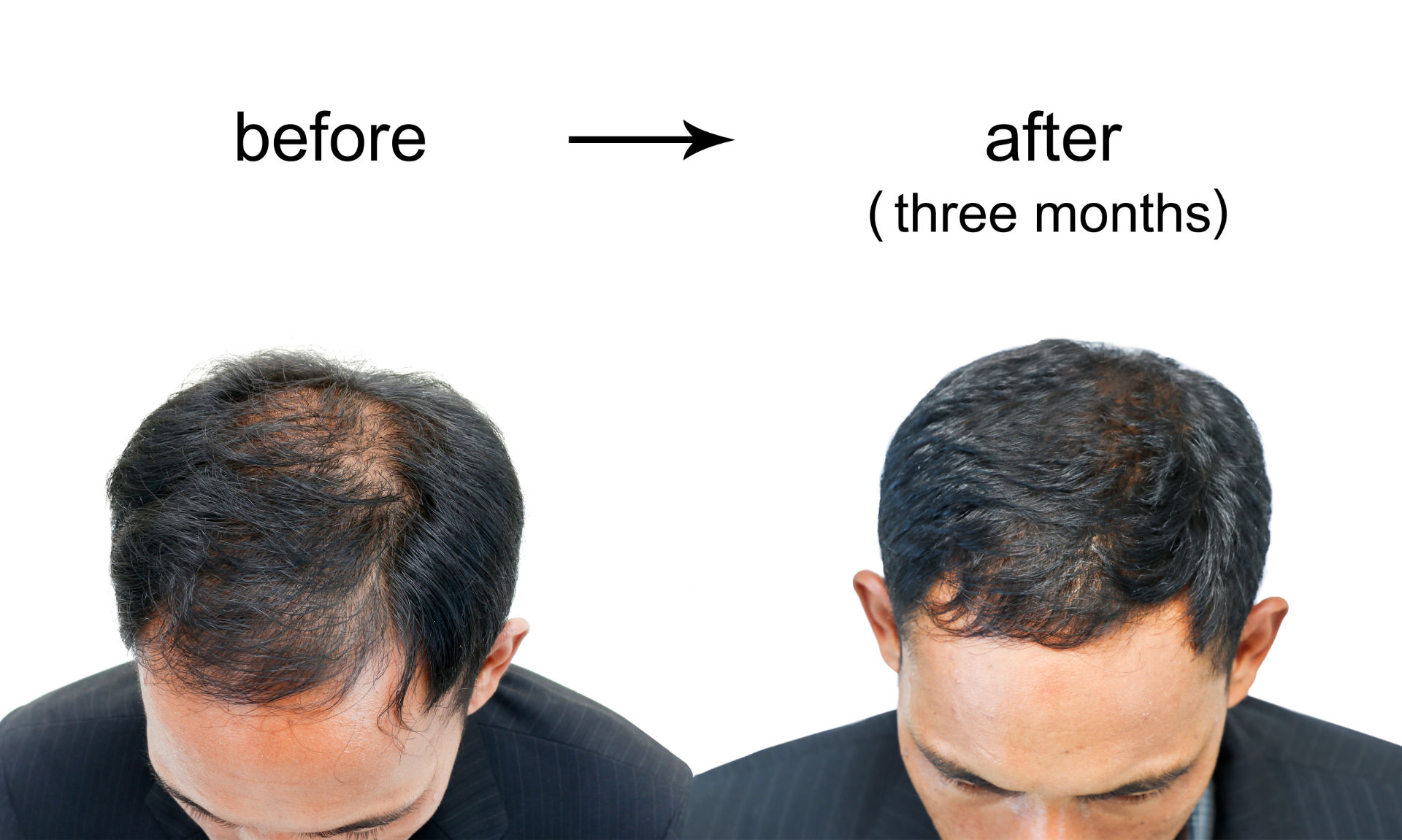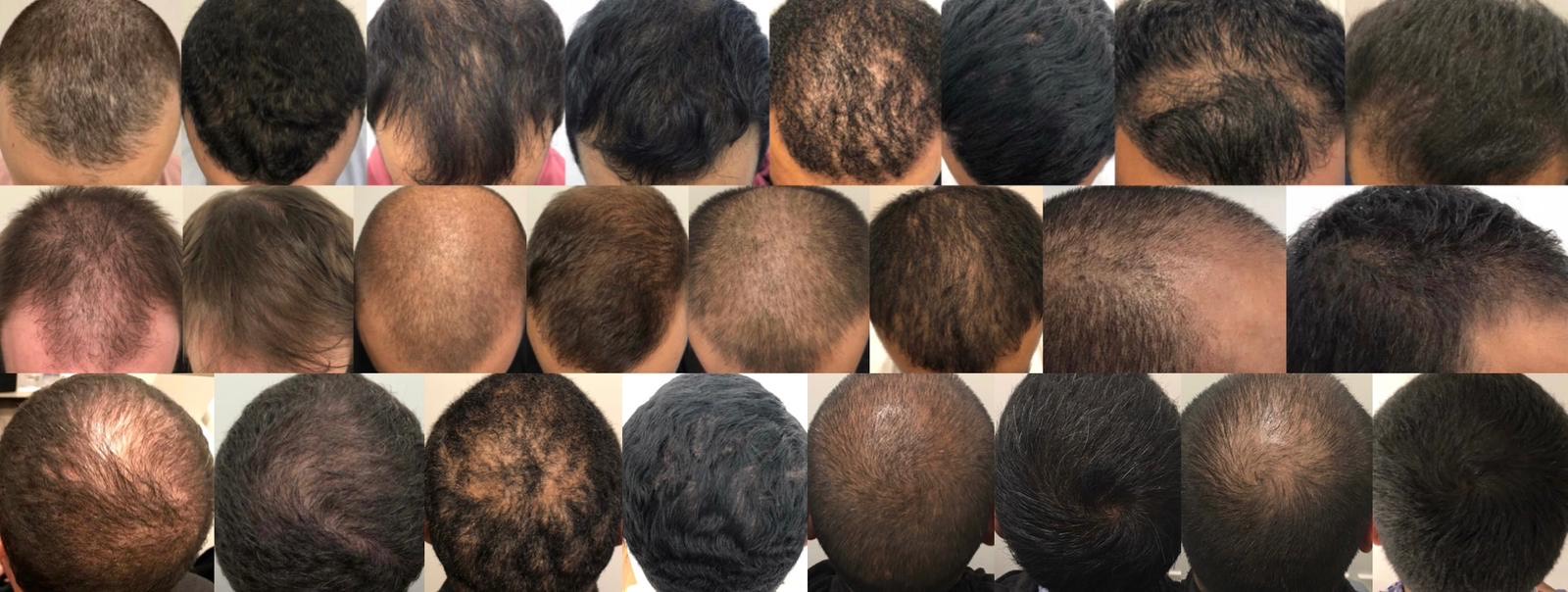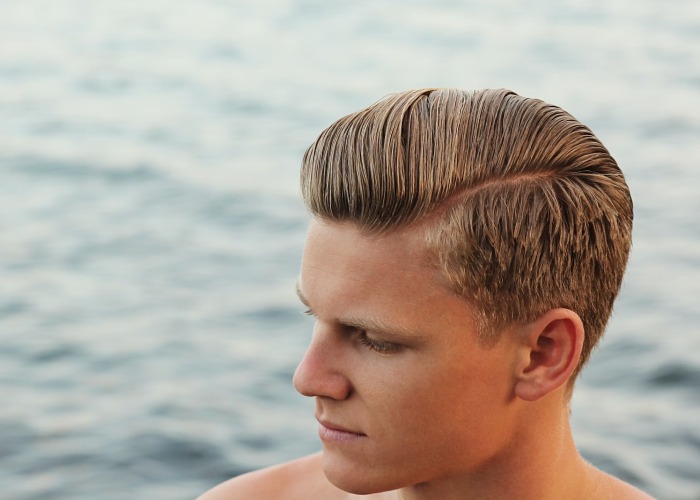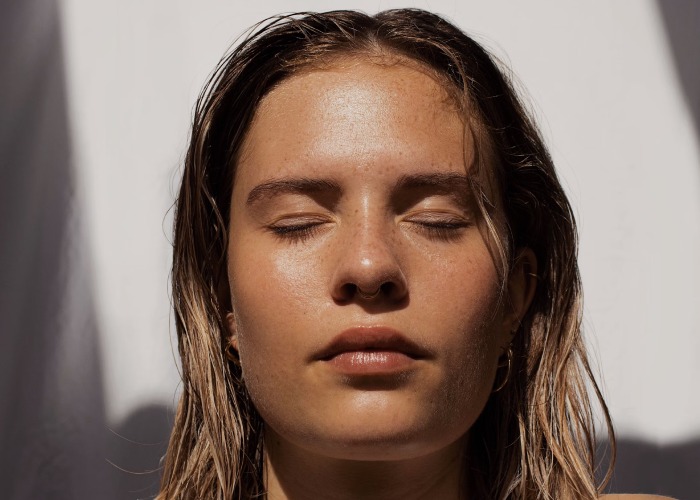Do you yearn for thicker hair and more of it? Do you frequently wonder how you can prevent hair loss? Hair loss in men is widespread based on the genetic hand you’ve been dealt. However, that doesn’t mean you need to sit back and let it happen. Today’s men have many different hair loss treatment options to fight the effects of male pattern baldness. However, it may take a bit of time to figure out which hair loss treatment works best for you.
In this comprehensive guide, we will explore the best hair loss treatments for men, combining cutting-edge technology with proven medical therapies to help you regain your confidence. Whether you’re experiencing early signs of thinning or more advanced hair loss, our expert team is here to guide you through the options available, ensuring personalised care and outstanding results. Discover how you can restore your hair and transform your life with the latest advancements in hair loss treatment.
Hair Loss Treatment Options in Australia for Men
While there’s no way to prevent male pattern hair loss (also known as androgenetic alopecia) from happening forever, plenty of clinically proven therapies exist that can help slow hair shedding, promote hair regrowth, and make your hair thicker. Please read on in this guide, as we’ll go over a few of the most preferred hair loss treatments for men, as well as side effects and other things to consider.
Platelet-Rich Plasma (PRP)
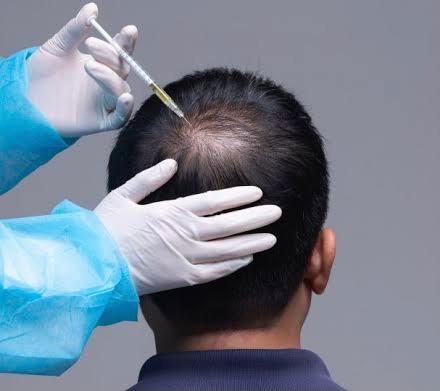
Platelet-Rich Plasma (or PRP) hair loss treatments are emerging as one of the most popular hair regrowth options, a solution that we specialise in at Hair and Skin Science, a collection of PRP hair loss and skin treatment clinics in Australia. Based on our experience, we truly believe that PRP is one of the most effective hair loss treatments for men, and many medical experts agree.
So how does PRP work? We start by drawing the patient’s blood and extracting the plasma and platelets. Once the PRP is isolated, we re-inject it into the patient’s scalp using micro-injections.
Micro-needling is a type of skin therapy that we couple with our PRP treatments. However, micro-needling can be done independently of PRP, too. The micro-needling process stimulates skin cells and hair follicles and, in doing so, increases blood flow.
Using this cosmetic procedure can help encourage regrowth and a healthy scalp. Still, our dermatologists and skincare professionals also use it to reduce the appearance of large pores, acne scars, stretch marks, and other skin blemishes.
The PRP that we inject rejuvenates skin and hair, and the micro-needling injections target your follicles. These injections encourage new hairs to grow where they may be thinning or receding.
Because the micro-needling process is extremely shallow, most patients experience little or no discomfort during and after treatments. PRP is one of the most effective treatments in the early stages of male-patterned hair loss, so it may lose some effectiveness if you’ve already noticed significant balding hair.
Since the plasma comes directly from your own blood, PRP treatments are well-tolerated by the body, with little to no adverse side effects.
Minoxidil (Regaine)
Minoxidil, best known as Regaine in Australia, has a long history as a hair loss treatment and is one of the most highly regarded hair loss treatments for men in terms of effectiveness. Minoxidil actually started as a pill designed to fight high blood pressure, but one of its side effects was excess hair growth. Now, it’s available in a once-daily or twice-daily topical formula.
Minoxidil works by giving each hair more time to grow, resulting in new hair that’s thicker, stronger, and denser. While the drug is safe and effective for both men and women, you’ll need to keep using it for as long as you want the effects. The increased hair density and growth will stop when you discontinue treatment.
Hair Transplant Surgery
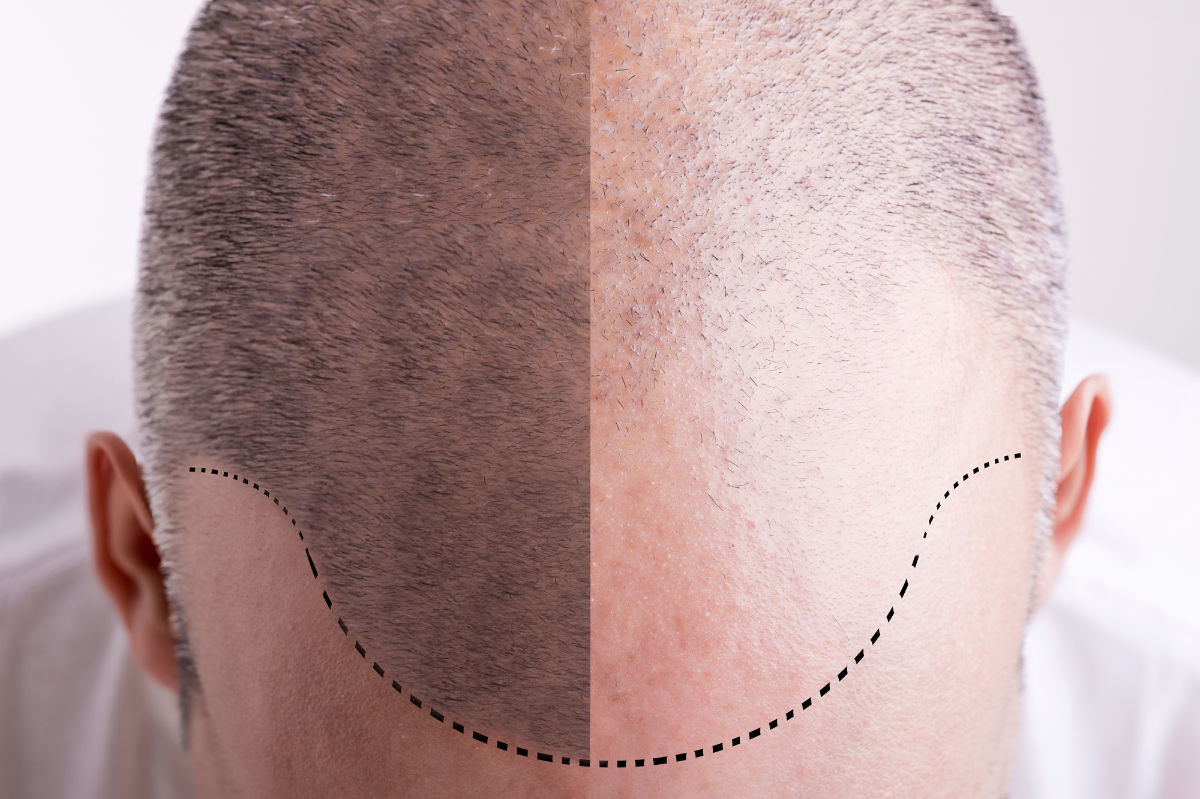
Hair Transplant surgery is one of the most effective methods of treating hair loss in men. It’s not a miracle solution, though, as you’ll need to have healthy hair to transplant from (the donor region) to be eligible for hair transplants.
Hair transplants, also known as hair restoration surgery, generally come in two types. The first is follicular unit transplantation (FUT), while the other is follicular unit extraction (FUE).
FUT is an older method for hair transplantations that involves grafting linear strips of hair from the lower back portion of your scalp (where hair tends to be abundant, even in patients with male pattern baldness) to bare, exposed areas of scalp skin. Unfortunately, this method leaves scars in the donor areas.
FUE hair transplants are a newer surgical procedure that uses micro-punches to remove individual hair follicles from your scalp, then implants each hair follicle into bald areas. FUE results in a more even redistribution of hair.
As improvements have developed in the FUE technique, researchers have found that the two approaches are now comparable in terms of graft survival, hair density, and coverage.
Low-Level Laser Therapy (LLLT)
LLLP is a relatively new hair loss treatment for receding hairlines and bald spots. Also known as cold laser therapy, LLLT is very safe and reasonably effective, though you’ll need special tools to do it. You can use a handheld laser, a laser comb, or even a laser helmet to undergo these medical treatments.
A 2020 medical research review article found that, in ten research trials of LLLT as a treatment for hair loss, all found statistically significant increases in hair growth, including thickening in hair diameter and density. Even more, one study that compared LLLT with Minoxidil (see above) found that the two therapies in combination were even more successful than either therapy alone.
Diet, Exercise, and Other Lifestyle Changes

Poor diet and exercise can be a contributor to hair thinning and loss in people of all ages, especially in the case of a nutritional deficiency. However, if you’ve noticed the beginnings of male pattern baldness or the development of a bald spot, it may be time to make a lifestyle change. While a balanced diet and good exercise habits may not necessarily reverse a receding hairline, they can certainly slow thinning hair and help treat hair loss overall.
If you have bad health habits that contribute to hair loss, it may be time to leave them behind. Smoking, in particular, is a well-known cause of androgenetic alopecia. Additionally, if you have problems with itchy scalp causing you to scratch your head or pull your hair, it may be a good idea to find a treatment for those underlying issues.
Taking Care of Your Hair to Encourage Hair Growth
Male pattern baldness is a natural consequence of age in the majority of men. However, that doesn’t mean that you can be lax in your hair care routine. The better you take care of your hair, the longer it will last.
Some men may find that the occasional scalp massage is both stress-relieving and rejuvenating. Since a scalp massage helps open the scalp’s blood vessels and increase blood flow, regular massages may help you grow hair over time.
You may also see results with gentle shampoos and treatments that target male pattern baldness. Aside from professional products, home remedies such as coconut oil, olive oil, castor oil, rosemary oil, and peppermint oil are also anecdotally known to help encourage hair growth. However, there’s less clinical research to support them.
Herbal Supplements
Plenty of herbal supplements exist on the market today. Whether these supplements truly promote hair growth or not is still up for speculation, although since many of them are affordable, there’s no reason not to try them as part of your regimen. However, it’s very advisable to research them first and talk to your doctor to make sure they will not interfere with the medications you take.
The most common herbal remedies for hair growth include:
- Biotin
- Green tea
- Hibiscus
- Saw palmetto
- Bhringraj
Reduce Your Stress
Stress is a well-known and documented contributor to hair loss, but it can be hard to change a stressful lifestyle. If you can’t remove the stress from your life, consider therapies that may help reduce your overall stress levels. Body massages, including scalp massages, are an excellent example of this, and they have the bonus effect of promoting the growth of more hair at the same time. You might also try de-stressing practices such as yoga.
Wigs & Hair Pieces
While a wig isn’t a hair “regrowth” method, a wig or hairpiece can be an acceptable alternative for many men. Today’s wigs are more convincing than ever, and even high-quality wigs can be cheaper than some expensive treatments for hair loss.
Ketoconazole Shampoo
Ketoconazole-based shampoo, an over-the-counter and prescription treatment, is an excellent addition to any hair loss prevention routine. In Australia, these are marketed under such brand names as Nizoral or Sebizole. While many people swear by these shampoos to increase hair growth in men and women, they are primarily antifungal and anti-dandruff agents, so they help fight infections of the scalp.
JAK Inhibitors
Immunomodulatory drugs such as Janus kinase (JAK) inhibitors are new medications on the horizon in Australia for alopecia areata. JAK inhibitors such as tofacitinib and ruxolitinib have not yet been approved for treatment for alopecia areata, but studies are underway. Alopecia areata is a similar condition to androgenetic alopecia.
JAK inhibitors don’t directly work to prevent hair loss, so they’re not a common treatment option for normal male pattern baldness. However, some JAK inhibitors help reduce inflammation, so they may indirectly have potential hair loss applications.
They shouldn’t be your primary treatment option unless you have an underlying medical condition that JAK inhibitors can fix. Most JAK inhibitors regulate your immune system, which can leave you more vulnerable to disease.
Talk to Your Doctor
It’s always a good idea to contact your dermatologist before trying any hair loss treatments on your own. Not only can your doctor help determine which medical procedures or treatments might work best for you, but they also can help track down any medical conditions or even prescriptions you’re taking that could be contributing to your hair loss.
In many cases, if you think your hair loss is a result of a medication or treatment you’re taking, you’ll see plenty of hair regrowth after the treatment stops. Afterwards, a medical professional can help educate you about alternative options that may not cause hair thinning or loss.
Reclaim Your Confidence: Start Your Hair Regrowth Journey Today!
In the end, the best hair loss treatments for men are the ones that work best for you! Even if some therapies might help someone else, if the side effects don’t suit your lifestyle, or a medical condition prevents you from using them, just move on to another option (with your doctor’s consent, of course).
If you’re fighting men’s hair loss, consider contacting us at Hair and Skin Science to learn about and experience our hair loss treatments for men. We have hair loss clinics Melbourne, Sydney, Brisbane and all across Australia. Schedule your free consultation with our expert team today to discover the best treatment options for you. Your journey to a more confident self starts with a single click.
